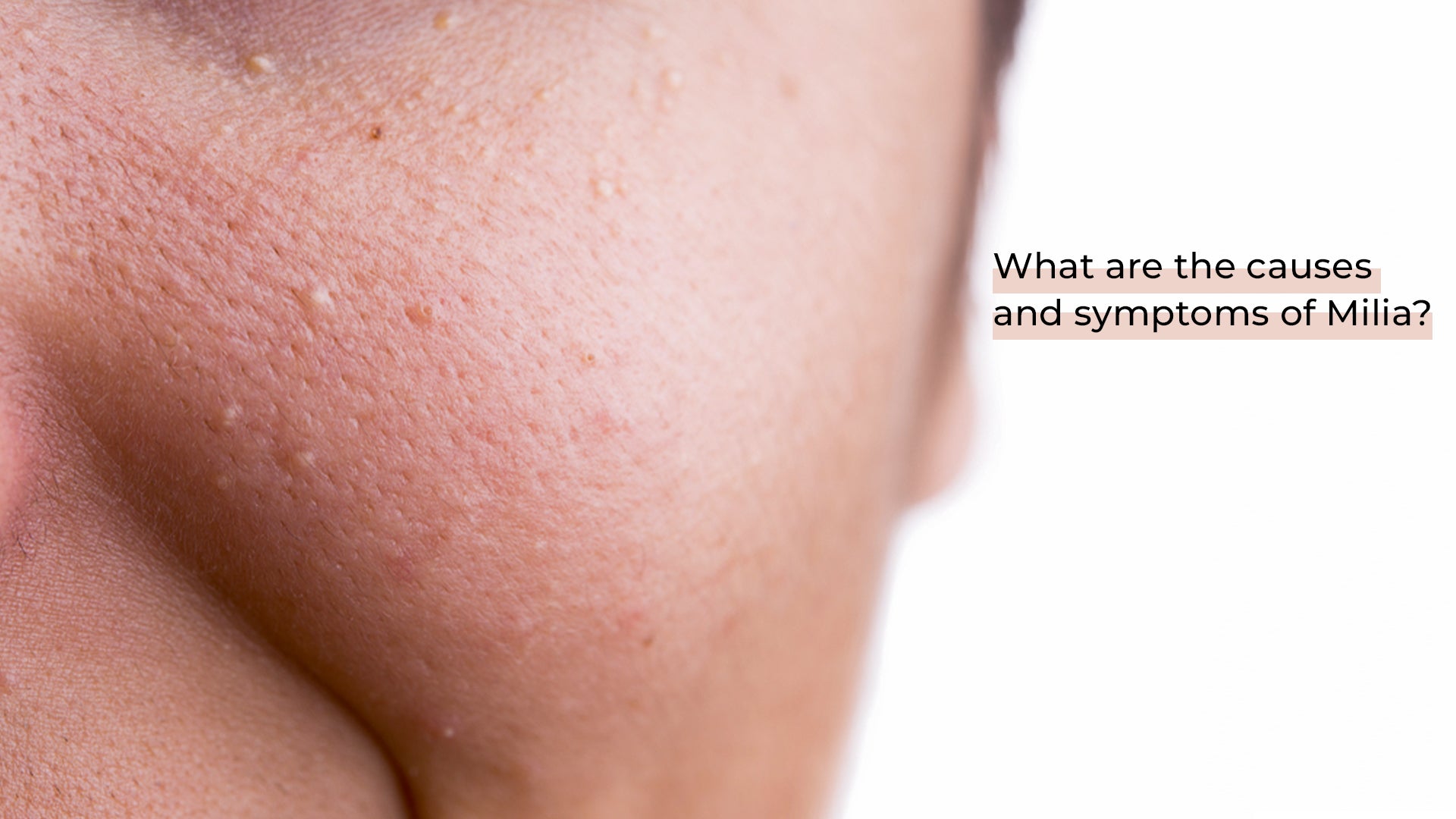Have you ever observed small whitish or yellowish bumps on your face that are similar to pimples? If yes, then let's try to understand the causes, symptoms, and treatment of those small white bumps called Milia.
What do you need to know about Milia?
Milium is called "milk spots" or "oil seeds" and it mostly occurs in newborn babies. Milia are tiny white or yellowish small bumps that appear on the cheeks, nose, chin, limbs, trunk, etc. and are called milia. Milia are harmless and can be treated easily. Apart from newborn toddlers, milia can infect any age group. Milia can take the shape of many forms, like
- Milia en plaque: This type of Milia occurs for most women over the age of 50 due to genetics and autoimmune skin diseases. Milia en plaque forms on the eyelids, ears, cheeks, and jaw.
- Traumatic milia: This type of milia happens when the skin undergoes any damage or injury. Rashes, sunburns, etc. are the reasons for traumatic milia occurrences. The small bumps are painful with an itching sensation and pus at the tip.
- Primary Milia: Primary Milia often occurs in the cheeks, eyelids, forehead, genitals, etc. The primary milia in newborn babies are not that intensified. These small bumps fade away after a few days.
- Neonatal milia: Around 50% of newborn babies have neonatal milia. This type of Milia occurs on the nose, inside the mouth, face, trunk, etc. Usually, neonatal milia disappear within weeks in newborn babies.
The causes of milia:
The mechanism that our bodies follow is that they slough off old cells and regenerate new cells. When these old cells don't slough properly, the former skin cells accumulate together and harden to form a milium. This is a general mechanism of milia formation. But, there are a few other factors that influence the cause of milia.
- Milia can be formed due to skin damage resulting from sunburns, Nash's, injuries etc.
- Use of steroids as medication for ages
- genetic disorder.
- Newborn babies are most likely affected by Milia as their skin constantly regenerates. Milia is also called "baby acne."
Treatment for Milia:
- Exfoliation: Exfoliation is the best way to eliminate Milia. The use of BHA (beta hydroxy acid), AHA (alpha hydroxy acid), and salicylic acid as exfoliators will help to eradicate Milia effectively.
SALICYLIC ACID SERUM, BHA EXFOLIATING SERUM
The antibacterial and anti-inflammatory properties of salicylic acid calm skin irritation and eliminate dead cells. The BHA serum acts as a wonderful exfoliator that penetrates deep into the skin and cleans pores.
AHA SERUM, 10% LACTIC ACID
The 10% LACTIC ACID, AHA SERUM is an advanced exfoliator that does not just hydrate the skin but makes the skin brighter and healthier. This is the best exfoliating serum for removing dead cells, patches, dark spots, acne spots, marks, etc.
- Retinoids: Retinoids are great skin exfoliators. They remove the dead skin cells, including Milia, which is caused by the aggregation of dead skin cells in one place.
- Chemical peeling therapy: In chemical peeling, the outermost layer of the skin will be removed, effectively giving space for new cells to grow.
- Milia will peel off easily within a few weeks in newborn babies, but these cysts will be annoying in adults. In this case, one can opt for laser abrasion to remove small bumps on the outer skin layers.
- Sunscreens and Moisturisers: Milia can even occur due to excess exposure to sunlight. Proper use of sunscreen and moisturiser protects the outer layer of the skin from milia.
Reference:
Milium. (2009).
dermnetnz.org/topics/milium







 +91 9347578980
+91 9347578980